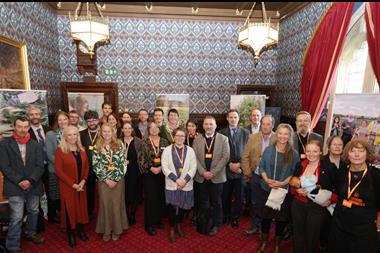
The manufacturing and retail sectors have done a lot of good work on sustainability over the past 10 years. Instead of waiting on new schemes, companies have seized opportunities and made impressive investments.
However, their efforts are being hampered by uncertainty around investment and delays to schemes like the deposit return scheme (DRS). So now the new government is in, here are the key packaging changes we need to ensure a more sustainable future.
Define the DRS
DRS is not a one-size-fits-all solution, and it shouldn’t be approached as such. Given that the delayed scheme is now set to launch in October 2027, the conversation around how and to what it should be applied has been pushed down the agenda. In my view, it needs reigniting – especially with the clear benefits kerbside collection offers for some, if not all, materials. The government needs to listen to the industry.
For glass, traditional in-store DRS can lead to reduced glass recycling and an increase in plastic use by consumers. Meanwhile, digital DRS would enable kerbside collection – which makes it easier for consumers to recycle glass and other products from their home, and would enable retailers to connect recycling with existing loyalty schemes. The simpler the scheme, the greater the uptake.
Be transparent on EPR
Extended producer responsibility (EPR) is an opportunity for manufacturers to champion the progression of the circular economy. Yes, it places the financial burden on manufacturers, but it also allows us to create processes that work for consumers, councils, retailers and manufacturers alike, both now and for the future. We need to use this to showcase the sector’s desire for sustainability.
Clarity from the government on exactly what EPR entails is therefore an absolute necessity, and we need the base fees and details to be shared as soon as possible. The more uncertainty around EPR, the more strain it places on manufacturers. Once we understand the cost implication, it’s then on the sector to make the most of it through collaboration and innovation.
The other key area where more transparency is required is the interlinked packaging recovery note (PRN) system. The lack of robust monitoring mechanisms for PRNs undermines what it is designed to do: to encourage the recycling of material and keep recycled material in the UK. For EPR and PRNs to truly work, and a more sustainable sector to be created, clarity in implementation is key.
Under the current PRN system, too much cullet is shipped out of the UK to be recycled and reused abroad. The practice of shipping good glass abroad has become incentivised under the current system. We are also losing a lot of glass in the UK to landfill and incineration. By urgently tackling these factors, we can get the PRN price to a more affordable level and make glass a better circular economy material for the UK. It makes little sense having to ship glass back into the country at greater costs due to a broken PRN system, when we can just keep it here to begin with.
Back net zero commitments
Achieving net zero will require a concerted effort from every member of the chain, from manufacturers and suppliers to retailers and government bodies. The more businesses push forward, the easier the transition becomes. This is something we’ve worked hard on with our suppliers, and we already have a number of closed-loop systems at our sites for items such as cardboard.
However, the shift to net zero will not happen solely from more legislation. The continued buy-in and commitment of the UK government to deliver on the promises it makes is a necessity – meaning funding and continued support to decarbonise. Schemes like the Industrial Energy Transformation Fund, Clean Growth Fund and industrial decarbonisation strategy can help address funding issues, but this is only half the battle.
The proper implementation of the infrastructure needed to meet regulations and standards is a far greater task. It’s here the sector needs to lead the way in setting out where changes can have the greatest effect.



















No comments yet